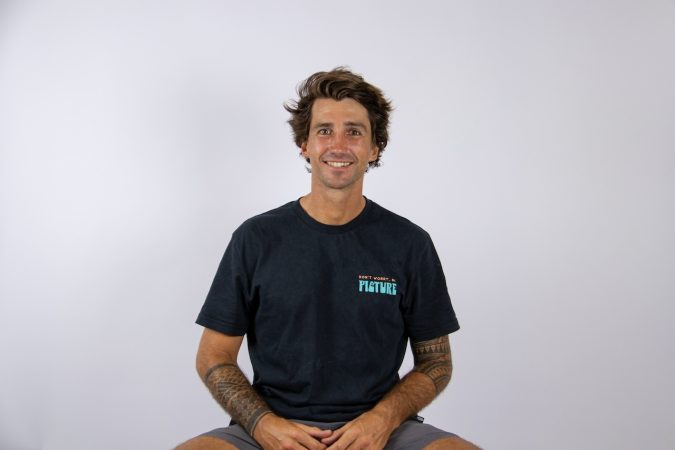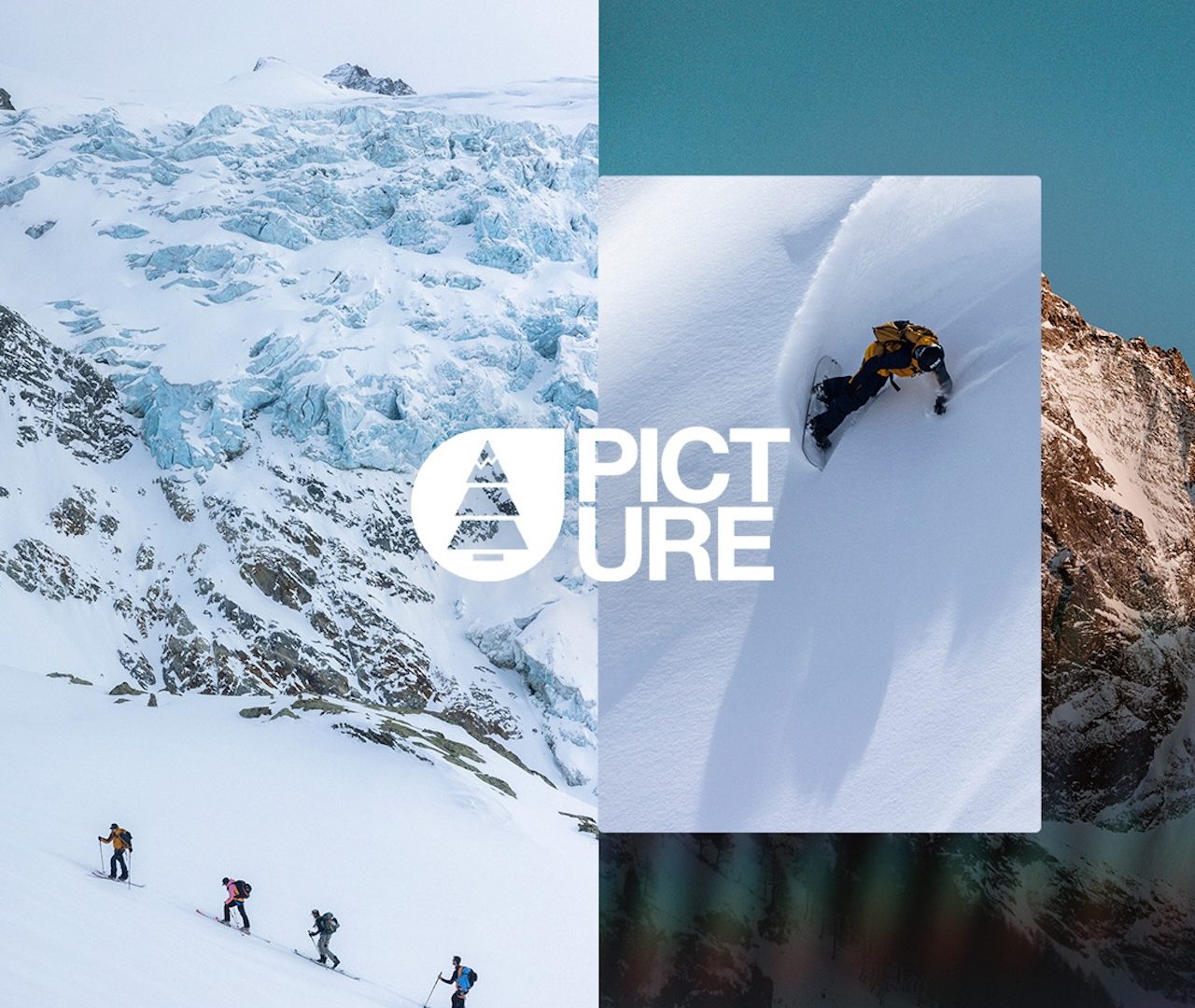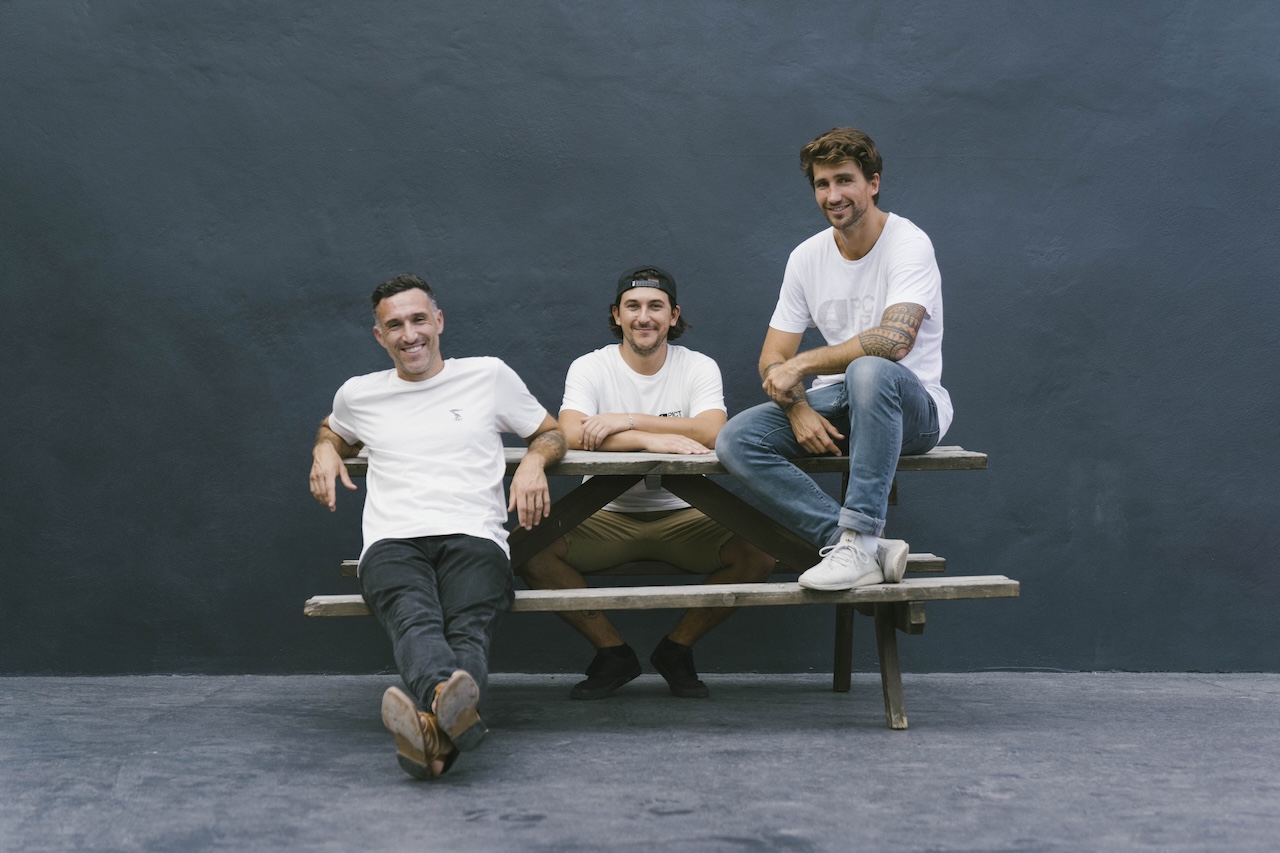
Picture Co-Founder Julien Durant Talks Business: 15 Yrs, Rapid U.S Expansion & Remaining True To Core BoardSports
Picture Organic Clothing started 15 years ago as a bright, fresh and disruptive force in the snowsports outerwear market with a keen focus on their environmental impact. Fast forward to 2023 and the company – now fully B Corp registered – has grown through its adolescent years, and just as their approach to sustainability has matured, so has their approach to business and design.
A company with snowsports still at its core, Picture is now also firmly established in the worlds of surf, MTB and hiking. We were invited by Picture to a press event in Paris to discover their focus on the hike category, something they’ve been active in for six years, but without shouting about too loudly.
We took the opportunity to sit down with long-time friend of Source Mag, Picture Co-Founder Julien Durant to chew the fat. We covered a range of topics spanning their rapidly growing US business, some pivotal qualitative research they embarked upon and we talk about how the brand positions itself now 15 years in. Interview by Source Editor Harry Mitchell Thompson.
Julien, let’s start off by talking about Picture and the hiking category.
In 2017 we started developing some gear dedicated to hiking, but we’ve never promoted hiking as a category. It’s a category that most of our community relate to. In summer and winter, they all hike differently; they trek, they Bivouac, they hike to reach different spots for climbing, snowboarding etc. So, it’s really related to something deeper than just “a hike”. When we launched the name Hike last year, I was worried about the perception of the name because sometimes there’s your grandfather, your grandma and the dog, with their poles and it can be very old school.
For our community, it’s not always about performance, it’s about sharing an experience. We aren’t targeting the old school traditional hiker, who is taken care of by Columbia & The North Face, who have been established brands in the category since forever. We really want to be rulebreakers.
Poler Stuff inspired us a lot. There was a lot of momentum around that brand and I think they made hiking cool – it was a door opener for us, because then came TenTree and other brands like Cotopaxi. They brought new vibes and technicity to hiking and reached a new younger customer. Those customers were snowboarders and skiers but not core guys, in that they didn’t dedicate their whole life to skiing or snowboarding.
They were the consumers that rode a little in winter and then mountain biked in summer – looking for lots of experiences. And this is where I think that category gained momentum for Picture, because it allowed us to follow our customer where they go.
We promote surfing at Picture by looking for hidden spots. We don’t promote the WSL, we promote people like Damien Castera who goes on trips on sailing boats to find hidden waves. And it’s about the experience to reach a spot, but the experience is just as important as the surf itself, and this is where that hiking range is really key. We know that as surfers and snowboarders, we want to look cool. We want to look good. The dress code is key, so you feel like you’re part of the community. And this is where I think we are bringing some interesting pieces to the market, which are different from the classic approach and are instead close to the boardsports community.

I hear your American business is growing well and you launch Ecomm there next year. Please tell us about Picture’s business in the States.
It’s growing fast, yes. We have a subsidiary with a finance department there, because to import goods you have to be a registered corporation in the USA. So, we import the goods to the USA and then we subcontract logistics and hybrid sales team. The team there have done a great job because now we sell Picture into over 300 doors in the USA.
We hired a country manager through the subsidiary who deals with the sales force. We have five main regions, but it’s different from Europe in that you don’t drive your car to visit every store one by one. The trade show model is so important there. Each territory has its own trade show. We hit 13 trade shows throughout winter and all the customers (retailers) travel to the trade shows.
In North America it’s similar to the UK business because there are key accounts which have very premium stores in all the key cities like Snow & Rock and Ellis Brigham. We have Public Lands, Evo, Nordstrom and REI in the USA. These are our four main customers in North America, who cover 150 doors. So, half of our doors are owned by these four customers.
How long have you been operational in the US?
The American customer has been able to buy Picture product since 2015. We’re growing there step by step. At the moment, we have a lack of awareness. To invest in brand awareness in all those territories is too expensive compared to the level of business we do. So, we invest territory by territory. Colorado is where we are the strongest, where we’ve done most business in the past year.
Now we have lots of expectation in our D2C there. One of our biggest weaknesses has been that without D2C, we can’t offer shop kid deals. Shop kids have a huge influence on the customer because they wear the brand, reflect the brand. True “influencers”.
In North America, it’s only the brands who give discount vouchers to kids that are succeeding because the shop kids only purchase from brands they can get a good deal from. We’re hopeful this investment in D2C will help us to get more kids on the floor into Picture.
When it comes to social media, there was no point in investing in creating traffic without ROI. Now because we will see some ROI, we can invest more. Volcom, Burton, The North Face and Patagonia have succeeded with this in their D2C game.
Despite previously retailers thinking good brand D2C harmed the wholesale business, it does the opposite, it’s actually really helpful for brick and mortar because it grows brand awareness. Of course, D2C takes some market share from retailers initially, but the market share it takes covers all the expense for brand awareness, so it creates momentum and traction for brands in the stores. So, for next season we will start investing here, and we expect our profits to cover the outlay, and start this benefit circle, helping us to grow.
At the moment our US business is 80% snowsports, 10% surf and 10% hiking.
No mountain biking?
Mountain bike is only a fraction of our business there. The issue is the origin of the product as we make them in Turkey and China. The duty is too expensive when you import the goods into North America. For next year, we are moving production to Vietnam, which is duty free with the USA. So, we will be able to be competitive in the US market with our jerseys, fleeces etc.
Depending on the textile, knitted products for example, if they aren’t made in the USA, Mexico, Honduras, Chile or Vietnam or Thailand, then you are exposed to high custom duties. It’s so expensive it prices you out of the market, which had previously been the case for Picture. It’s big news for us next season, where a t-shirt that we previously had to sell for $50, we will now be able to sell for $30, just thanks to the change of manufacturing and less duty.
Sourcing is pivotal to succeeding in the USA. I am responsible for the sourcing, and it has been a big challenge. Because you look for stability, which helps with quality and efficiency in production.

And you’re going to be lowering your prices next year in general. That’s big news. How are you doing so?
It’s big, especially for outerwear. All our pants were more than £200. For next year, we’ll have a £190 pant. We save costs on two things: the dollar currency rate is better than last year. And to import goods, pre-covid a full container cost €3000, and during covid we were paying €25,000. Thankfully that container price is now back to €3000, so we wanted to pass that saving on to decrease prices, to be more competitive and to offer more affordable products.
The t-shirt market, for example, is highly competitive, so being able to offer t-shirts at $30 instead of $35 means we can gain market share. We are conscious of not wanting to present ourselves as too much of a high-end, premium brand. It’s not in line with the brand values we’ve had since day one. We’ve always wanted to present sustainable and eco-friendly products at the same price as non-sustainable products.
We sell some more expensive products with elevated features and more technicality, which we develop with athletes for special expedition products etc, but this is another discussion. Our plan is to add features to our top of the range items to achieve credibility, but to be consistent in the mid-range, and be affordable, which will keep our customers faithful.
So, the most important thing for Picture is to remain true to your core customer over chasing revenue. Just how have you ensured you’re targeting your core audience and how do you know who that is?
The main challenge we have every day is to keep our core consumer with Picture. If we miss that, we will kill the brand. This is what has happened with some big major brands like in the ’90s & ’00s. And they are now investing lots of money to take back their heritage. But it costs so much money, so much energy, and you’re never sure it will work. Now we know that we have that core consumer, it’s a fight every day to keep them with us. This is what led us to conducting some qualitative surveying with focus groups, which has had a huge effect on our business.
We met your intel guy Pascal here in Paris.
Yes, we’ve worked with an industry expert who was at the origins of Nike SB in France, one of the guys conducting surveys at skateparks worldwide, part of the intelligence team behind Nike.
In our business (boardsports) we tend to pander to the needs of the retail buyer, but what we’ve learnt is to get to know the consumer and their needs. Because if the customer asks for it, so will the buyers. And this is what Nike do, they are very consumer-focused and not buyer focused. And so our mentor led us through some qualitative surveys to really understand the wants and needs of the customer. So, you do a focus group of 15-20 people, but the panel is chosen to reflect 10,000 customers. It’s always hard to convince the team that the results of a qualitative survey are important, and the focus groups aren’t cheap. But the information you receive is invaluable.
What are the key insights?
It has really helped us to refocus the core values of Picture into some key stories and key sports. For the next three years, the plan is to reduce the number of SKUs by 20%. Because today our catalogue is too big. And our buyers told us, “You can’t really convince me with that Bible. You’re confusing me. So please tell me what to buy!”
The next key piece of feedback was that we were trying to play in the streetwear category, but it’s not our playground. We made fake streetwear. We tried to look like something we’re not. The lookalike is not authentic and the customer hates a lookalike.
So, we had to come back to our basics, our fundamentals, our foundation. Our foundation is skiing, snowboarding, hiking, mountain biking and surfing. So, we need to stick to that. Stick to our technical product. We were told we need to keep our lifestyle category an extension of our basics, but don’t try to create lifestyle products which are a copy & paste of The North Face, which all of our designers loved so they wanted to copy & paste Arc’teryx & Snow Peak garments which were far from the Picture DNA. They thought that by copying a Snow Peak jacket, we would sell to a Snow Peak customer, and we didn’t sell any of those. It was a big failure.
Our key takeaway was; stick to what you are, don’t try to grow too quick and don’t think you’ve missed something. Stick to what you have, be authentic and it will come to you. Stick to your community, don’t lose it.
How do you make somebody a new Picture customer in 2023?
We invest heavily in movie production. We produce everything, we manage the distribution and it’s almost 30% of our marketing investment worldwide. Being part of all the key outdoor festivals brings new outdoor lovers to Picture. It’s always a gamble when you create a movie. This year, our new movie (Chronoception) has been picked by Banff for the global tour so we will cover more than 700 dates everywhere in the world. This represents around 600,000 outdoor lovers who go to the cinema to see the movies.
So, we attract new customers with our movies, but also by opening more and different retail doors. For example, with REI we are opening non-snow doors. We also hope our bold designs will appear to customers in store and we really want to convert shop kids. Our clinics are really key and it’s here we teach the benefits of the brand, so this can be passed on to the consumer.
Athletes are very important, but athletes without good content have no interest for a brand. If Travis Rice doesn’t do anything, even if he’s the best snowboarder ever, there is no interest for a brand to pay him for anything, just to have his name. This is why people like Thomas Delfino & Elias Elhardt are key for us. Known for their sense of adventure and content making, these are our two key snowboard athletes.
I remember when Picture first started 15 years ago; the really bright adverts and colourways. But it seems like the brand has matured now…
Our design has evolved with us. With those big, blocky colours, even as customers of our own brand, we didn’t want to wear that. We wanted to use more sleek designs, with more sobriety and so we hired designers to try to reinvent the Picture aesthetic into something which keeps that authenticity of the brand and that uniqueness, but with a more modern approach.
Jeremy (Rochette, Co-Founder) is still involved day-to-day and has been working with some younger designers to try and strike the right chord. Jeremy loves to design technical products. But now we are around 40 years old; the 80s generation. Now we are getting older, and we are looking for more sleek styles and designs. So, we’ve been working on how we stay disruptive in terms of design, but attractive for a bigger range of customers. And especially the 20-30 age range, because they are the customers we want to see in our hiking range.
As you grow older, you want to stay young. So, we stick to what the 20-30s are buying. It’s how most people think: “What’s the younger guy buying at the office? Oh, that looks good. That’s how we stay young, let’s buy that.”

Picture Co-Founders Jérémy Rochette, Vincent André, and Julien Durant






